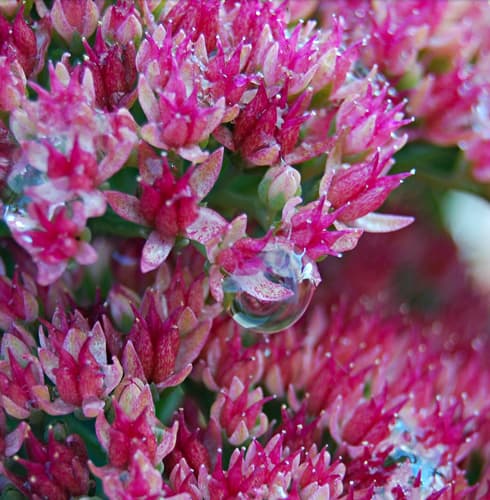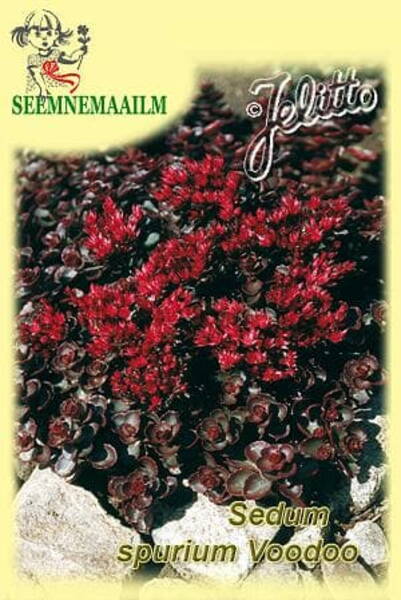Plant with decorative leaves and flowers for rock garden.
Flowering plant height: 5 cm.
Neon pink flowers, dark red foliage, round habit, variable.
Flowering period: VII-IX.
Winter hardiness zones: Z5-9.

Physical Characteristics.
An evergreen perennial growing to 0.15 m by 0.5 m. It is hardy to zone 7 and is not frost tender. It is in leaf all year, in flower from July to August, and the seeds ripen from August to September.
The flowers are hermaphrodite (have both male and female organs) and are pollinated by Insects. The plant is self-fertile. We rate it 1 out of 5 for usefulness.
The plant prefers light (sandy), medium (loamy) and heavy (clay) soils, requires well-drained soil and can grow in nutritionally poor soil.
The plant prefers acid, neutral and basic (alkaline) soils. It cannot grow in the shade. It requires dry or moist soil and can tolerate drought.
Habitats and Possible Locations: in Walls, In South Wall, In East Wall, In West Wall, Ground Cover.
Cultivation details: succeeds in most soils but prefers a fertile well-drained soil in a sunny position. Established plants are drought tolerant. Tolerates poor soils. Hardy to about -5°C. A mat-forming plant, it is very invasive. The flowers of this species are white or pink. All members of this genus are said to have edible leaves, though those species that have yellow flowers can cause stomach upsets if they are eaten in quantity. Plants in this genus seem to be immune to the predations of rabbits.
Propagation Seed - surface sow in spring in well-drained soil in a sunny position in a greenhouse. Do not allow the soil to dry out. Prick out the seedlings into individual pots when they are large enough to handle. If sufficient growth is made, it is possible to plant them out during the summer, otherwise keep them in a cold-frame or greenhouse for their first winter and plant them out in early summer of the following year.
Division is very easy and can be carried out at almost any time in the growing season, though is probably best done in spring or early summer. Larger divisions can be planted out direct into their permanent positions. We have found it best to pot up the smaller divisions and grow them on in a lightly shaded position in a cold frame, planting them out once they are well established in the summer.
Natural Flowering Period: July - September.
Winter Hardiness: Z7.
Growth Habit: mat-forming.
Foliage: broad, succulent leaves with toothed edges. Height with Flower: 15 cm. Spacing between Plants: 25 cm. Soil Requirement: Well drained soils, pH 5.8 - 6.8. Location: Full Sun.
Grams per 1000 seeds: 0,1. Seed Requirement: 0,5 g / 1000 plants.
Best Sowing.
Date: anytime.
Way of Germination: fast germinator.
Germination: these are very tiny seeds which should be mixed with the finest sand or talcum for an even sowing. Do not cover with compost, only press them in gently. Irrigate from the bottom or with a hand-sprayer, so that the seeds will not be washed away. Rapidly germinating, keep seed in constant moisture (not wet) with temperatures of about +20°C. Keep in cooler conditions after germination occurs.
Germination to Transplant: 4-6 weeks.
Transplanting to Salable Plant: 6-10 weeks.
Fertilization: Low.
Eng.: Tworow stonecrop, sedum. Bot.syn.: Spathulata spuria (M.Bieb.) A. & D.Love.












